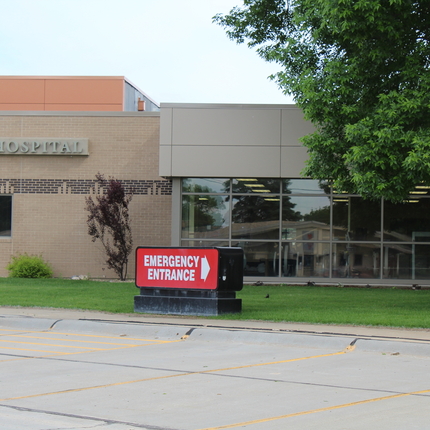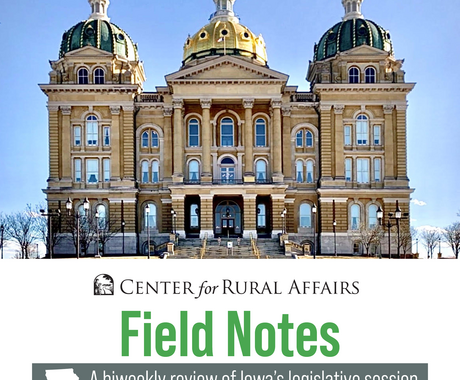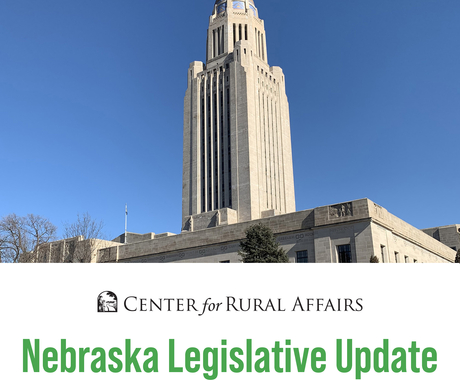Jon M. Bailey dispels some myths about Medicaid, private insurance, and the uninsured.
During the 2-year debate on expanding Medicaid to low-income people without health insurance here in Nebraska, a major anti-Medicaid argument was that it doesn’t provide quality coverage for health care needs, and low-income residents would be better off uninsured.
Reports of organization such as The Buckeye Institute (from Ohio, a state that has expanded its Medicaid program) make such claims. They have been repeated here and across the nation by a network of anti-ACA and anti-Medicaid expansion politicians and groups.
These arguments are, of course, nonsensical. Myriad economic and health benefits accompany health insurance. These are well documented in the Center for Rural Affairs’ health policy reports. To deny people those benefits and the security and well-being they bring and then tell them they are better off is absurd and immoral.
It’s also dishonest, as recent findings from the Commonwealth Fund Biennial Health Insurance Survey show.
The 2014 survey found that Medicaid, the federal-state health insurance partnership, outperforms private health insurance in many respects. All measures show those receiving Medicaid are significantly better off than those without health insurance.
Underinsured: Defined as out-of-pocket health care costs higher than 5% of household income or delaying or failing to obtain needed medical care or medications because of cost, underinsurance is a major rural health care issue. Those who are underinsured may experience significant health-care financial problems.
Based on the definition, 37% of those with private insurance are underinsured compared to 26% of those on Medicaid.
Table 1: Performance Measures for Health Care under Medicaid, Private Insurance, and Uninsured, by Percentage
| Characteristic | Medicaid | Private Insurance | Uninsured |
| Regular source of care | 95% | 94% | 77% |
| Quality of care excellent or good | 55% | 53% | 40% |
| Same day, next day appt available | 53% | 58% | 43% |
| Medical history is known | 86% | 84% | 77% |
| Receive blood pressure check | 92% | 90% | 83% |
| Receive cholesterol check | 76% | 80% | 61% |
| Receive seasonal flu shot | 46% | 50% | 27% |
| Experience medical debt problem | 19% | 33% | 47% |
| Refrain from physician visit | 10% | 17% | 40% |
| Refrain from filling prescription | 13% | 15% | 30% |
| Cost-related access issue | 23% | 30% | 54% |
Source: Commonwealth Fund Biennial Health Insurance Survey
Source and quality of care: A constant complaint about Medicaid (and Medicare, the public health program for seniors) is that fewer health care providers take patients on public insurance programs, and the quality of care suffers as a result.
The survey finds that nearly all Medicaid (95%) and private coverage patients (94%) have a regular source of health care. The quality of care (rated excellent or very good) is higher for Medicaid patients (55%) than for those with private insurance (53%).
Uninsured people are severely disadvantaged in both respects. Only 77% of those without insurance have a regular source of health care. And only 40% of uninsured rate their care as excellent or very good, compared to 55% of those with Medicaid.
Those with private insurance are slightly better able to schedule a same day or next day medical appointment (58%) compared to those on Medicaid (53%) or uninsured (43%).
However, those on Medicaid have physicians and physician staff who know their medical history; 86% for those on Medicaid compared to 84% for those with private insurance and 77% of the uninsured.
Recommended preventive care: On 3 recommended preventive care measures, those with Medicaid and private insurance have similar outcomes, with the uninsured lagging significantly behind.
Slightly more Medicaid recipients obtain recommended blood pressure checks (92% versus 90% for those with private insurance and 83% of uninsured). More people with private insurance obtained recommended cholesterol checks (80% compared to 76% of those with Medicaid and 61% of the uninsured). And half those with private insurance obtained a recommended seasonal flu shot (compared to 46% of those with Medicaid and 27% of the uninsured).
Health care financial peace-of-mind: Not surprisingly, few Medicaid beneficiaries experience financial issues related to health care.
Only 10% of those with Medicaid had problems paying or are unable to pay medical bills, and 19% have at least one medical bill that is a problem or is a debt. More people with private insurance had both (21% with problems paying or unable to pay a medical bill, and 33% with at least one problem medical bill or medical debt).
The uninsured face significant health care-related financial difficulties. Over a third (35%) of the uninsured have problems paying or are unable to pay medical bills. Nearly half of the uninsured (47%) have at least one problem medical bill or medical debt.
Medical care when it’s needed: Medicaid also performed better than private insurance or being uninsured for measures for obtaining health care when it is needed.
Only 10% of those on Medicaid did not visit a doctor or clinic with a medical problem, compared to 17% of those with private insurance and 40% of the uninsured. Only 13% of those on Medicaid did not fill a prescription, compared to 15% of those with private insurance and 30% of the uninsured.
Medicaid also performed better in regards to general cost-related health care access issues. Less than a quarter of those on Medicaid (23%) had at least one cost-related health care access problem. Meanwhile 30% of those with private insurance and 54% of the uninsured had at least one cost-related health care access problem. For those with private insurance this likely reflects the higher number of those who are underinsured.
Medicaid is far from a perfect source of health care coverage. Provider reimbursements are low, and often susceptible to state budget cuts. That makes many providers less likely to accept Medicaid patients.
That is a lesser issue in rural areas, as physicians in rural areas are more likely to participate in the Medicaid program and accept all or new Medicaid patients. Research shows practicing in a rural area is one of the factors associated with higher physician Medicaid participation.
Medicaid services are also susceptible to state cost-saving budget cuts in a way that private insurance is not. But to say Medicaid is not worthy health insurance and that low-income individuals and families and people with disabilities are better off being uninsured is simply false.
Jon M. Bailey is a rural policy and research expert and former Center for Rural Affairs Policy and Research Director.




